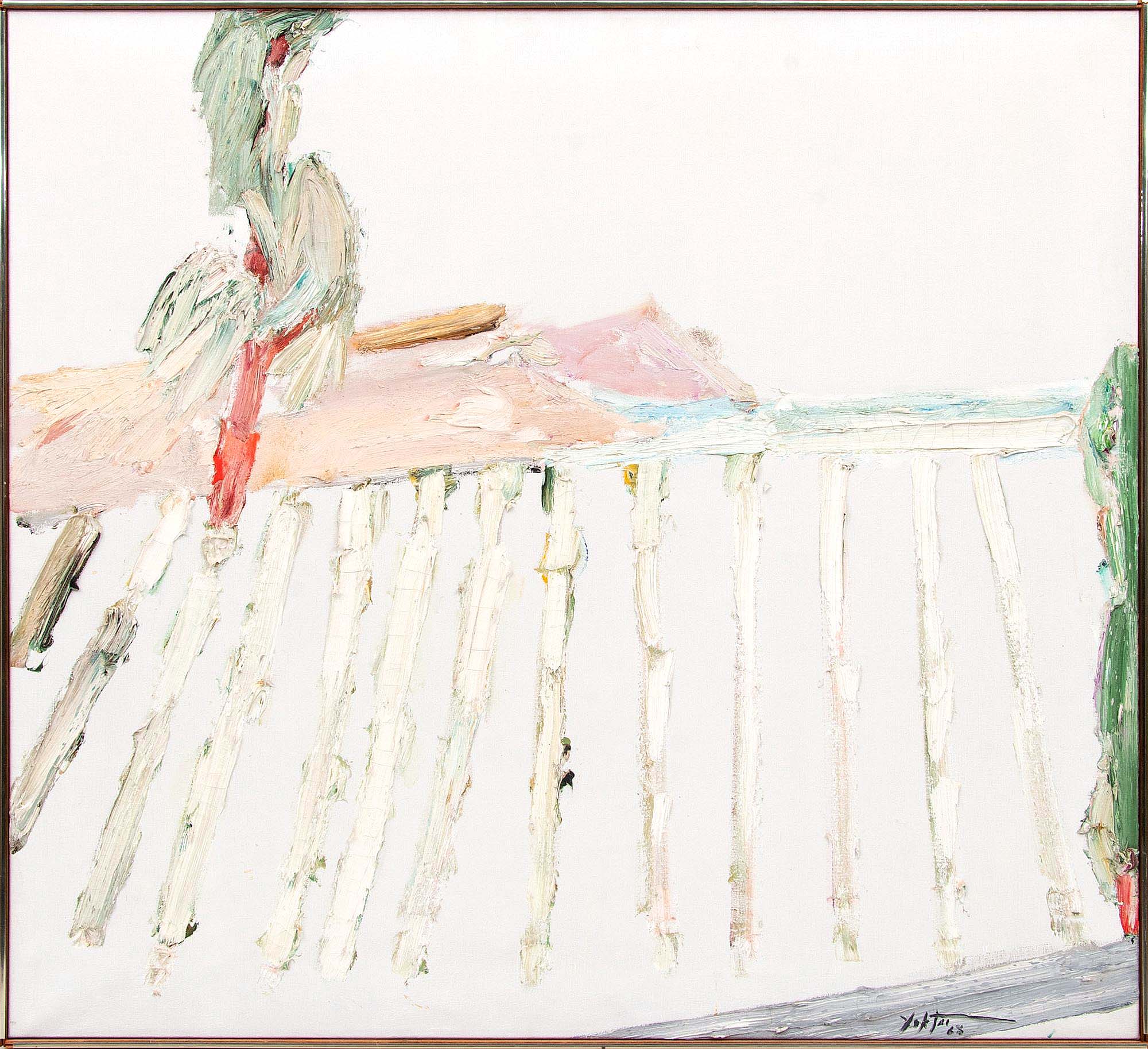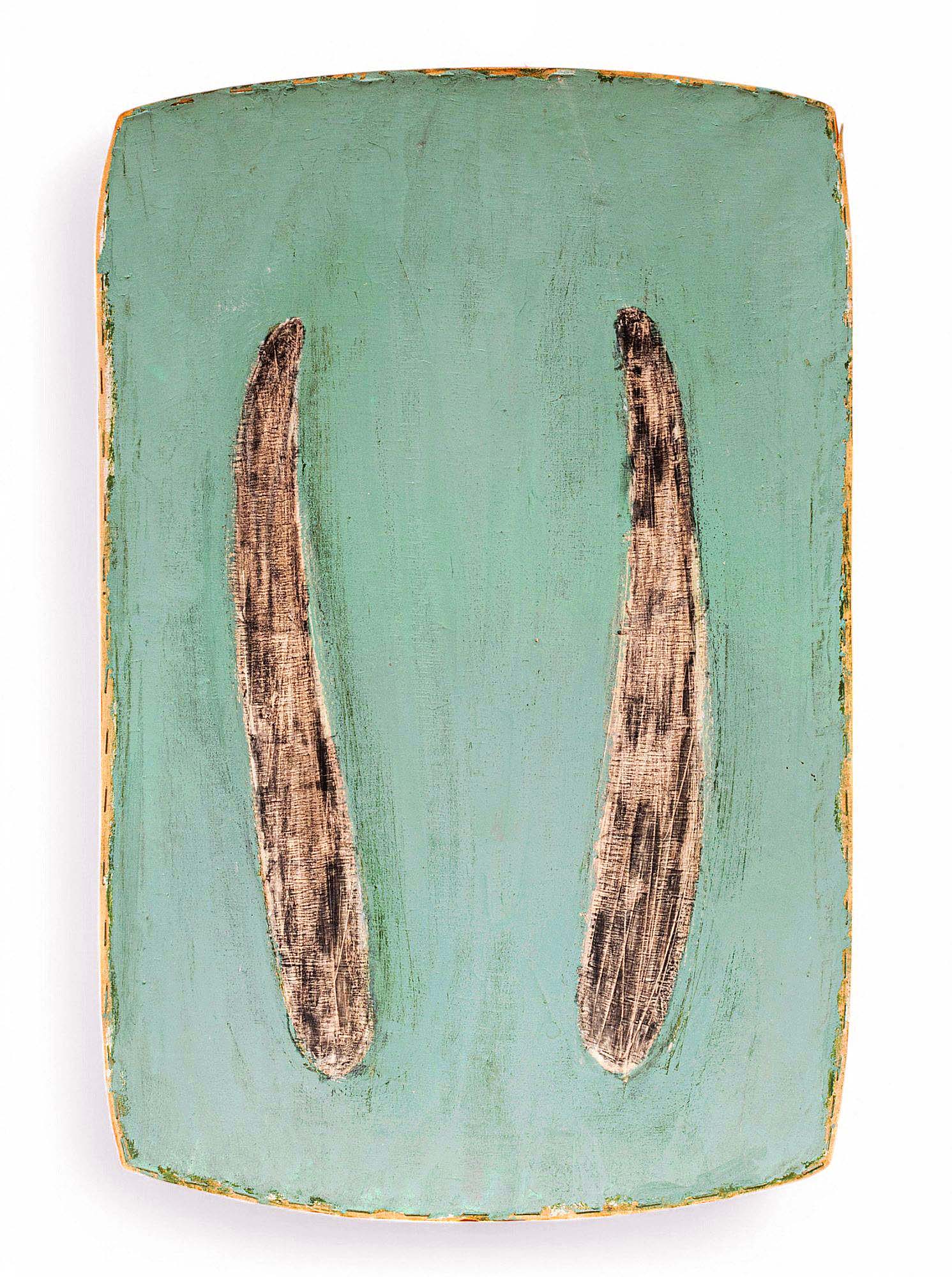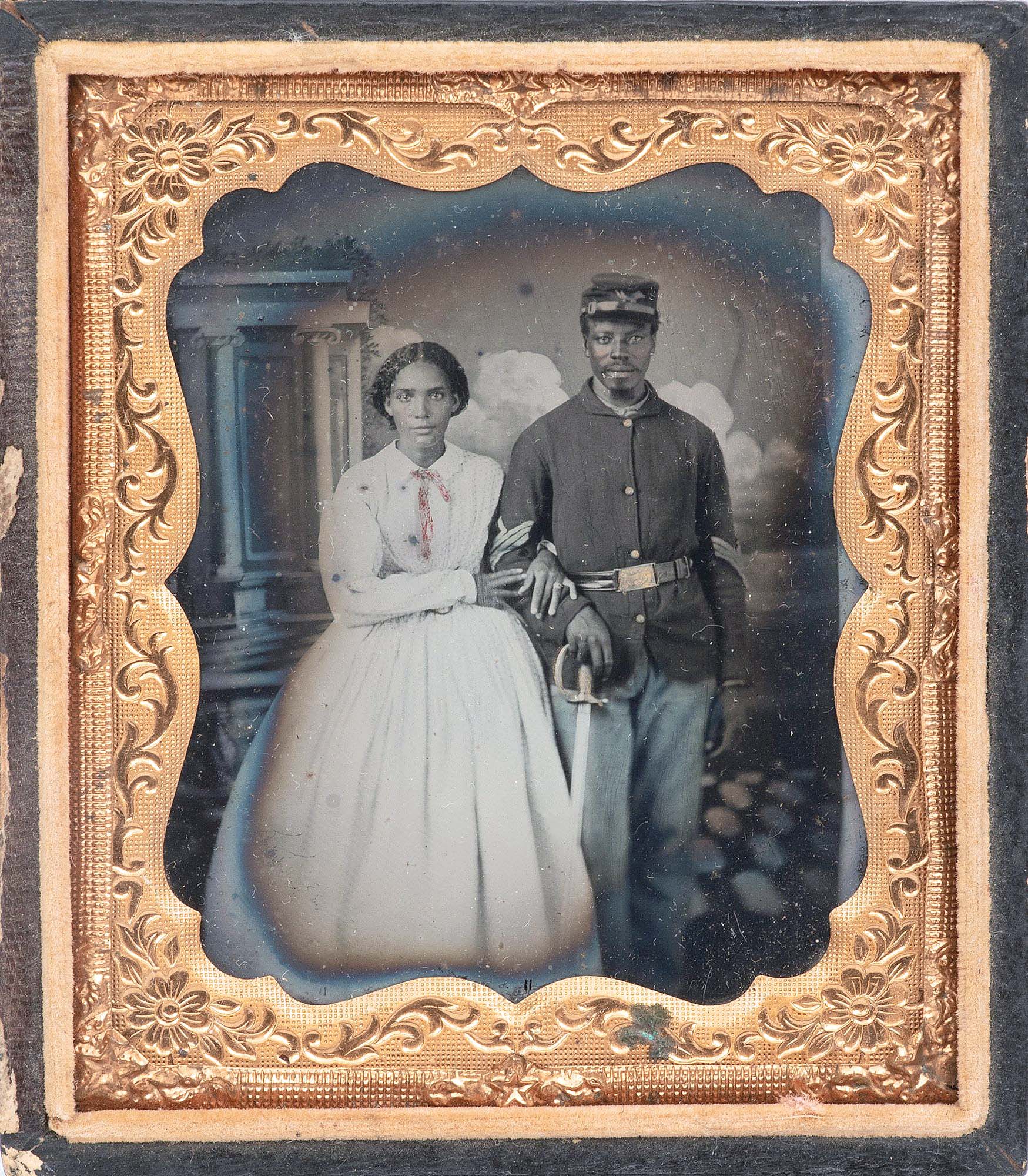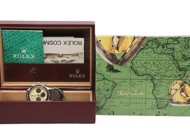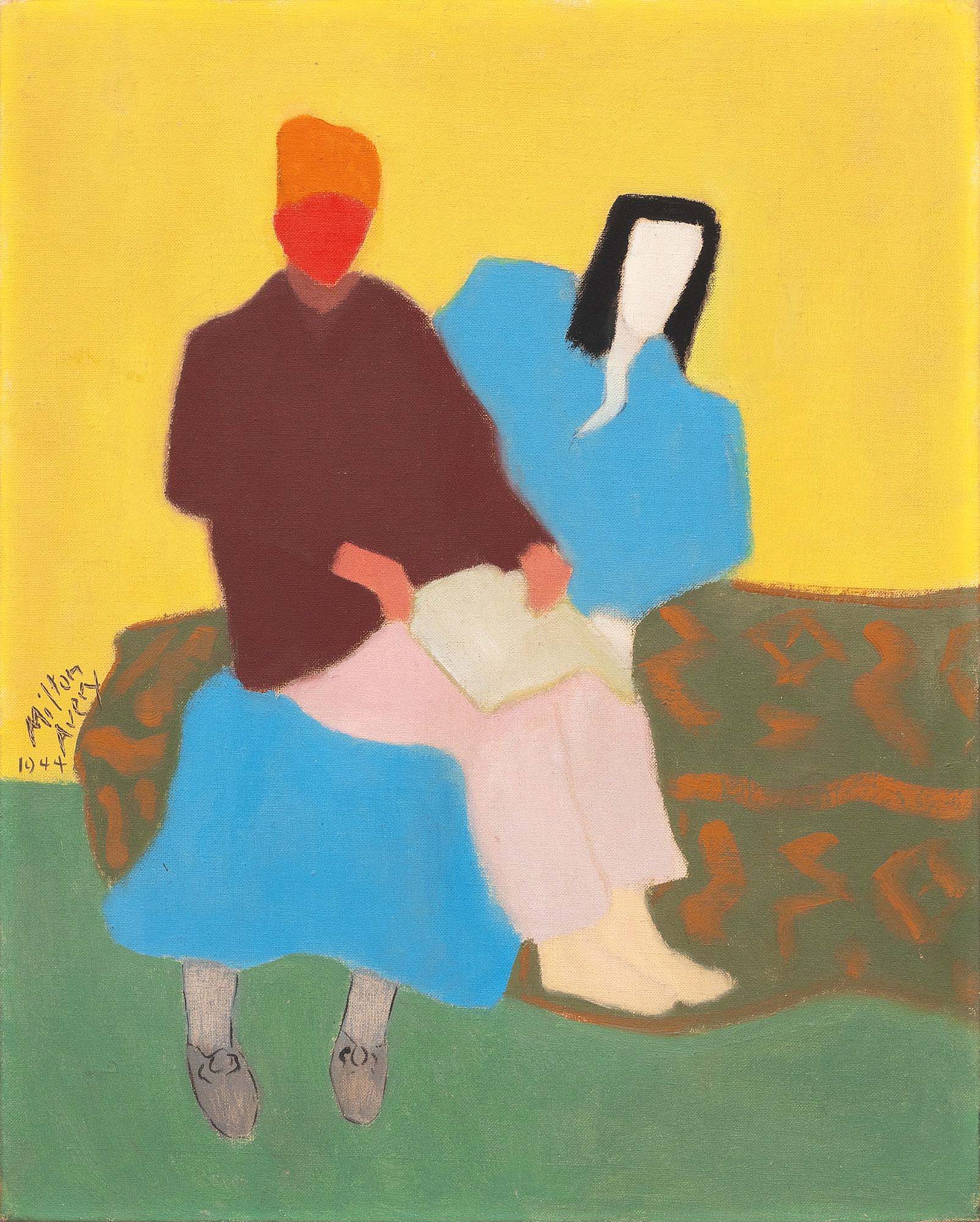
Earning $186,000, the highest price on either day, was “Mama’s Boy” by Milton Avery (American, 1885-1965). The 1944 oil on canvas board measured 20 by 16 inches ($100/150,000).
Review by Carly Timpson
DETROIT — In a two-day auction, April 17-18, DuMouchelles offered nearly 660 lots of luxury watches, jewelry and fine and decorative arts. The Friday session, April 18, featured an exceptional selection of modern and contemporary fine art, sculpture and decorative works from the Detroit Institute of Arts, for the benefit of the museum. These works had been purchased by Gil and Lila Silverman, Bloomfield Hills, Mich., for the benefit of the museum. Gil Silverman was a Bloomfield Hills-based real estate executive. A steadfast supporter of the arts, Silverman served on boards and committees for the Detroit Institute of Arts, the Museum of Modern Art in New York City and the Cranbrook Academy of Art and Art Museum,” noted Karen Walker Beecher, executive vice president and treasurer at DuMouchelles.
Robert DuMouchelle, general manager, added, “We are very pleased with the participation; there was a lot of interest in weeks leading up to the sale, which was great. As we were watching the market as a whole, we weren’t sure how it was going to go, but we really saw the market rally for the works and it was just really a fun sale all over.” In total, the two-day auction saw a 90 percent sell-through rate with vibrant bidding activity in person, online and on the phones.
Milton Avery’s 1944 “Mama’s Boy” became the highest-priced lot of either day, realizing $186,000, selling to a New York phone bidder who won out over spirited phone, online and sales room bidding on the second day, according to Beecher. Signed and dated in the lower left quadrant, the oil on canvas board depicted Provincetown, Mass., art dealer Tirza Karlis with her son. The work sold with a 1978 letter from Avery’s wife, Sally M. Avery, to Albert Goldman, the president of Gallery Gemini, Inc., in Palm Beach, Fla., who once owned the piece. DuMouchelle commented, “We had a lot of people go after the Avery — it was a great piece. It was authenticated by the artist’s daughter back in the 70s, and the people had that letter still, which was really nice.” According to the auction catalog, it also had provenance to a prominent art collection in Franklin, Mich.

Leading the first day was this 18K gold Patek Philippe Triple Calendar Moonphase Calibre 2400 wristwatch; sold with its original box and case, it achieved $155,000 ($20/30,000).
Leading the sale’s first day was a Patek Philippe watch that came from a private Bloomfield Hills, Mich., collection. This watch, a Triple Calendar Moonphase 18K gold Calibre 2400, was presented on a black leather Patek Philippe strap with a hallmarked 18K gold buckle. Accompanied with its original Patek Philippe case and box, the luxury piece exceeded its $30,000 high estimate to sell to an online buyer in Miami for $155,000, which, according to DuMouchelle may be a record for the model.
The Bloomfield Hills collection consigned several other Patek Philippe watches; offered in succession were a stainless steel Aquanaut Calibre 330 on a black polymer Patek Philippe strap with its original case and box ($34,100) and a circa 1930 Patek Philippe for Tiffany & Company 18K yellow gold mechanical-wind pocket watch on an 18K yellow gold link chain ($10,540).
Exceptional fine jewelry was also offered on the first day, with an Italian 18K yellow gold and diamond collar necklace earning the top price in that category: $17,360. The necklace, stamped with hallmarks and trademarks, contained 110 round diamonds weighing a total of more than 5.5 carats. Following closely behind at $16,120 was a pearl, emerald and diamond 18K gold necklace ($12/15,000).. The piece was set with 14 cultured pearls and square emeralds and more than 680 diamonds of various sizes and cuts for a total diamond weight of 28.84 carats.
Also selling on day one was a circa 1920 Perruches vase by René Jules Lalique. The vase, molded in a rare deep blue glass, was detailed with several pairs of parakeets perched on flowering branches. Signed by Lalique in block letters and incised “France” to the underside, the vase was bid to $14,190, more than doubling its high estimate of $6,000. This vase, which came from a private collection in Bloomfield, Mich., was inherited by the consignor from an aunt around 1940 and sold to a collector in the UK.

In rare deep blue glass, this circa 1920 Perruches vase by René Jules Lalique (French, 1860-1945), 10 by 9 inches, flew to $14,190 ($4/6,000).
The sale’s second day, which included items from the Detroit Institute of Arts, comprised mainly of fine and decorative art. Behind the Avery painting was “Popelec (Ash Wednesday)” by Czech artist Frantisek Muzika. According to DuMouchelle, it “was a very interesting Surrealist piece. He painted it during World War II in Czechoslovakia, so that history was very interesting. The seller’s family had collected it from Muzika just after the war. It was just very rare and unusual. We had it authenticated, and the buyer was very excited because they knew of it and were glad to see it finally surface on the market.” There were multiple bidders from all around the globe vying for this piece, but one in Massachusetts, bidding online, won the 1944 Muzika for $105,400.
An untitled cyan oil on stretched, shaped canvas by Ron Gorchov sold to a New York phone bidder for $80,600. This work had provenance to Fischbach Gallery, New York City, and was acquired by Gil and Lila Silverman in 1975 and was sold in this auction as property of the Detroit Institute of Arts, for the benefit of the museum. Signed and dated “Gorchov 12/12/73” on the reverse, the piece was exhibited by Fischbach Gallery in 1975.
“Meadow,” a 1968 oil on canvas by Iranian artist Manoucher Yektai, sold to a New York phone bidder for $62,000. It had provenance to Gertrude Kasle Gallery, Detroit (paper label affixed verso); the estate of prominent collectors, Grosse Pointe Farms, Mich., and Sausilito, Calif.; and then by descent to private collectors in Cincinnati. The piece was signed and dated to the lower right and will be included in the upcoming catalogue raisonné, as arranged by the Manoucher Yektai Catalogue Raisonné Committee.
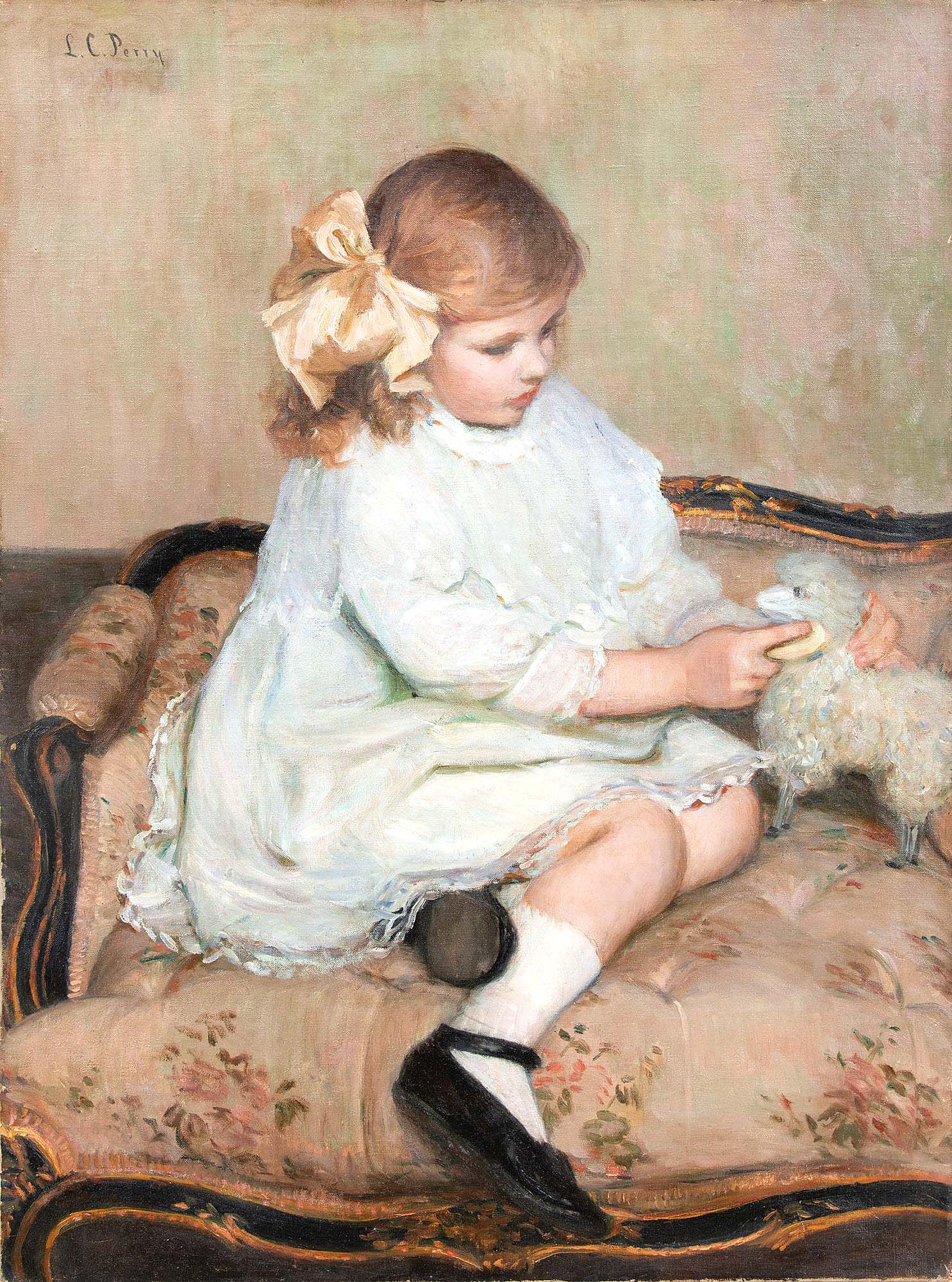
Lila Cabot Perry’s (American, 1848-1933) “Mary and Her Little Lamb,” 1880-1910, 34½ by 26¾ inches, sold on the floor for $34,100 ($25/35,000).
Lila Cabot Perry’s circa 1880-1910 “Mary and Her Little Lamb” sold, for $34,100, to a Michigan collector who was bidding in person. Depicting a well-dressed young girl brushing her stuffed toy lamb, the work came from a private collector in New Jersey who purchased it in an estate sale in 2013 following the devastation of Hurricane Sandy, though this work survived unscathed.
DuMouchelle called Roy Lichtenstein’s screenprint “Wallpaper with Blue Floor Interior” unusual, and bidders seemed to agree. Printed in five panels on Waterleaf paper, the work was signed, dated and numbered in the lower right of the fourth panel and is included in Roy Lichtenstein: A Catalogue Raisonné. Coincidentally, the piece had provenance to the Silverman’s estate, though it was separate from the Detroit Institute of Arts collection. For $34,100, it sold to a phone bidder in Illinois.

Titled “Spitball, this ebony granite sculpture by Tony Smith (American, 1912-1980), measured 14 inches in all three dimensions and sold to a local collector for $22,320 ($15/20,000).
The highest price achieved for a sculptural work was achieved by “Spitball,” a 1961 ebony black granite piece by Tony Smith. With provenance to the Silverman collection and commissioned by the Friends of Modern Art at the Detroit Institute of Arts, “Spitball” sold to local Michigan collector online, for $22,320, to benefit the Detroit Institute of Arts. According to the auction catalog, “‘Spitball’ exemplifies Tony Smith’s unique fusion of modular geometric forms and proclivity to push the expressive possibilities that can be achieved through a relatively limited number of elements. Smith named the sculpture ‘Spitball’ because he felt that his original small handmade tetrahedral model out of paper resembled the shape.”
A very unusual Civil War 1/6 plate tintype portrait of a uniformed Union Army first sergeant and his bride, circa 1865, achieved $8,680, selling to a phone buyer in Virginia. DuMouchelle commented, “it was very unusual to have a portrait like that surface he was a union soldier and a first Sargent which was a high rank and unusual for an African American; he was a very accomplished man. It was very well-preserved and in good condition. It’s the first to come across our auction block — we’ve had a lot of Civil War things over the years but never one of these, so this was great.”
Prices quoted include the buyer’s premium as reported by the auction house. For additional information, www.dumoart.com or 313-963-6255.




